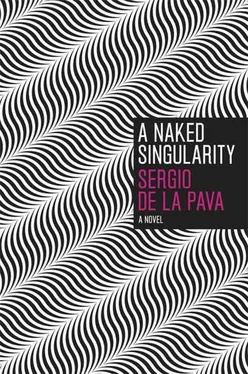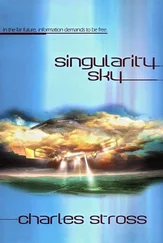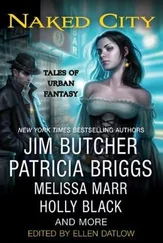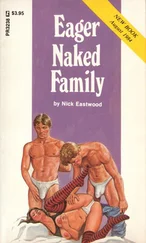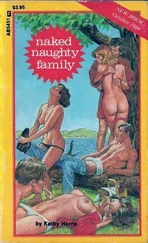Sergio De La Pava - A Naked Singularity
Здесь есть возможность читать онлайн «Sergio De La Pava - A Naked Singularity» весь текст электронной книги совершенно бесплатно (целиком полную версию без сокращений). В некоторых случаях можно слушать аудио, скачать через торрент в формате fb2 и присутствует краткое содержание. Год выпуска: 2012, Издательство: University of Chicago Press, Жанр: Современная проза, на английском языке. Описание произведения, (предисловие) а так же отзывы посетителей доступны на портале библиотеки ЛибКат.
- Название:A Naked Singularity
- Автор:
- Издательство:University of Chicago Press
- Жанр:
- Год:2012
- ISBN:нет данных
- Рейтинг книги:5 / 5. Голосов: 1
-
Избранное:Добавить в избранное
- Отзывы:
-
Ваша оценка:
- 100
- 1
- 2
- 3
- 4
- 5
A Naked Singularity: краткое содержание, описание и аннотация
Предлагаем к чтению аннотацию, описание, краткое содержание или предисловие (зависит от того, что написал сам автор книги «A Naked Singularity»). Если вы не нашли необходимую информацию о книге — напишите в комментариях, мы постараемся отыскать её.
Infinite Jest
A Naked Singularity
A Frolic of His Own
A Naked Singularity
A Naked Singularity — читать онлайн бесплатно полную книгу (весь текст) целиком
Ниже представлен текст книги, разбитый по страницам. Система сохранения места последней прочитанной страницы, позволяет с удобством читать онлайн бесплатно книгу «A Naked Singularity», без необходимости каждый раз заново искать на чём Вы остановились. Поставьте закладку, и сможете в любой момент перейти на страницу, на которой закончили чтение.
Интервал:
Закладка:
Blood streaming down his face, his heavily-muscled arms raised, Hagler looked invincibly evil. Leonard gave no indication that he would end his latest retirement. But the following year, when Hagler again looked beatable in defending his title with an eleventh-round knockout of John “The Beast” Mugabi, Leonard announced he would again unretire for the purpose of fighting Hagler, this time without any tune-up fights beforehand. The boxing world would finally get the fight it had longed for.
On April 6, 1987, the fight took place in Las Vegas. Both in their thirties, neither fighter was what he once was and the fight, though highly dramatic, was truthfully only a slightly-above-average affair. Hagler started slowly, showing his age and giving away a lot of early rounds. Then Leonard tired and Hagler came on strong. In the end, Leonard received a disputed decision. Hagler sought an immediate rematch but about a month after the fight Leonard announced he was again retiring. Seeing that the Leonard rematch would never happen, Hagler retired as well and never fought again. He was rich and healthy and wherever he goes today someone tells him he won the fight, that he was robbed. The retirement of Leonard, who had shown little interest in defending any of his newly-won middleweight titles, created multiple championship vacancies in that storied division. One of the vacancies was filled when, in October of 1987, Hearns smoked the Argentinian Juan Roldan to take one of the middleweight titles and become the first boxer to win titles in four different weight classes. Leonard then announced he was ending his latest retirement with the goal of winning his fourth and fifth titles; no one really mentioned the eye anymore. He accomplished his goal on November 7, 1988, when he knocked out someone named Donnie Lalonde to somehow simultaneously win titles in both the super-middleweight and light-heavyweight divisions, bringing his career total to five. (The thing with the titles was becoming more ridiculous with each passing day as seemingly every other second a new weight class was created complete with about thirteen different organizations ready to declare their “champion.”)
In the meantime Hearns was slipping fast. Defending his middleweight title against Iran Barkley on June 6, 1988, he was of course dominating when suddenly, in the third round, he got hit with a wild right hand that left him out on his feet and barely upright; upright, that is, until Barkley landed another right that finished the job, knocking Hearns down and out. When in his next fight he again visited the canvas in posting an unimpressive decision victory over James Kinchen, the consensus was that the shopworn Hearns was truly finished. On the bright side, Sugar Ray was, not coincidentally, finally willing to give Hearns that rematch he had ached for for so long. The fight was scheduled for June 12, 1989, and Leonard was the heavy favorite.
Roberto Duran meanwhile had fought no one of note following his loss to Hearns, winning seven fights but also losing a decision to someone named Robbie Sims. Yet so electric was the Duran name that he nevertheless received a title shot against the new champion Iran Barkley. Duran was thirty-seven, hadn’t fought a significant fight in five years, and was fighting a strong middleweight in his prime who was coming off an impressive knockout victory over an all-time great. Naturally Duran dominated Barkley, dropping him in the eleventh round and winning his fourth title by decision.
When Leonard/Hearns II took place four months later it was billed as The War. From the very start it became apparent that Hearns wasn’t the only one who had lost a lot as Leonard looked slow and hesitant to pull the trigger on his punches. That said, both men appeared to be at similar stages in their deterioration making for an exciting evenly-matched fight. But whereas their first fight eight years earlier had featured consummate skill, this one was more about two great men unwilling to surrender their ghosts. Hearns in particular — after admitting he was so haunted by the 1981 defeat that he thought more about Leonard than his woman — fought like he would rather die than lose again. He also fought better than he had in years, twice dropping Leonard with rights and generally controlling the fight throughout despite ultimately settling for a controversial draw in what was a scintillating, dramatic, great fight that featured ringside commentator Marvelous Marvin Hagler openly rooting for “Tommy.”
That should’ve been it really if there was any kind of warm rhythm to these things. Instead Leonard and Duran inexplicably mixed it up a third time on December 7, 1989, a mere nine years after the infamous no mas fight. The predictably tepid fight went to Leonard and a few weeks later the boxing decade these five men had dominated came to a close. Except for Hagler, they would all fight in the nineties but never against each other and never with anything like the former hoopla attaching.
On the decided periphery of all this interstitial fistic mayhem that characterized the mid-to-late-eighties stood Wilfred Benitez. Five months after losing to Hearns, Benitez fought Tony Cerda. Cerda was not a bad little fighter and an expert at kissing his cousin, having fought to a draw in four of his last five bouts. Benitez won an easy ten-round decision. It was his forty-eighth professional fight of which he had lost only two and each of those to a fellow great. There was no shame in that. He was twenty-four and still a premier fighter.
But insensate Time is nothing if not cruel and heartless. It corrodes then destroys, so that the man you literally and figuratively looked up to with your chubby face, who scooped you up to cross the street and patted you on the head to laughter, will later look through you from a crooked hospital bed then blindly up at you while wearing makeup in a bargain casket. The people who now surround you generating warmth will disappear leaving only an empty chill; the body you own and the brain it houses will malfunction. And sometimes, especially in Boxing, even a twenty-four-year-old can become an old man overnight.
Benitez next fought Mustafa Hamsho. Hamsho was a capable fighter, as evidenced by the trouble he had given Hagler two years earlier before being stopped in the eleventh on cuts, but Benitez had every reason to be confident he would post a meaningful win that would reinstall him at the forefront of his sport. Instead Benitez lost a clear decision, his first unjustifiable loss. (Just how unjustifiable became clear a year later when Hagler stopped Hamsho in the third in a rematch granted to Hamsho primarily on the strength of his victory over Benitez. That was what all-time greats did to people like Hamsho.) Now Wilfred’s career needed repairing but Duran had shown that you could suffer a bad loss and still come back to later post big wins for big money. After all, Benitez reasoned, Hamsho was better than fucking Kirkland Laing. So after posting a decision victory against a nondescript opponent in February of 1984, Benitez signed to fight Davey Moore, the same opponent Duran had used to rocket himself back to stardom.
Only now the reasons for the Hamsho loss started to maybe slowly reveal themselves. In the gym, training for Moore, he noticed that palookas who’d always managed to come down with mysterious ailments whenever he was looking for sparring partners were suddenly rearranging their schedules to be available. They wanted something to brag about, wanted to say they once held their own against the great Benitez. People were saying things too, louder and louder. That he seemed off in the way he acted towards people, well, more off than before anyway. When the Moore fight occurred, the latent, the whispered, became apparent and undeniable as Wilfred was knocked out by a right hand in the second round from the same fighter who could do nothing against a thirty-two-year-old Duran. Something was definitely wrong.
Читать дальшеИнтервал:
Закладка:
Похожие книги на «A Naked Singularity»
Представляем Вашему вниманию похожие книги на «A Naked Singularity» списком для выбора. Мы отобрали схожую по названию и смыслу литературу в надежде предоставить читателям больше вариантов отыскать новые, интересные, ещё непрочитанные произведения.
Обсуждение, отзывы о книге «A Naked Singularity» и просто собственные мнения читателей. Оставьте ваши комментарии, напишите, что Вы думаете о произведении, его смысле или главных героях. Укажите что конкретно понравилось, а что нет, и почему Вы так считаете.
